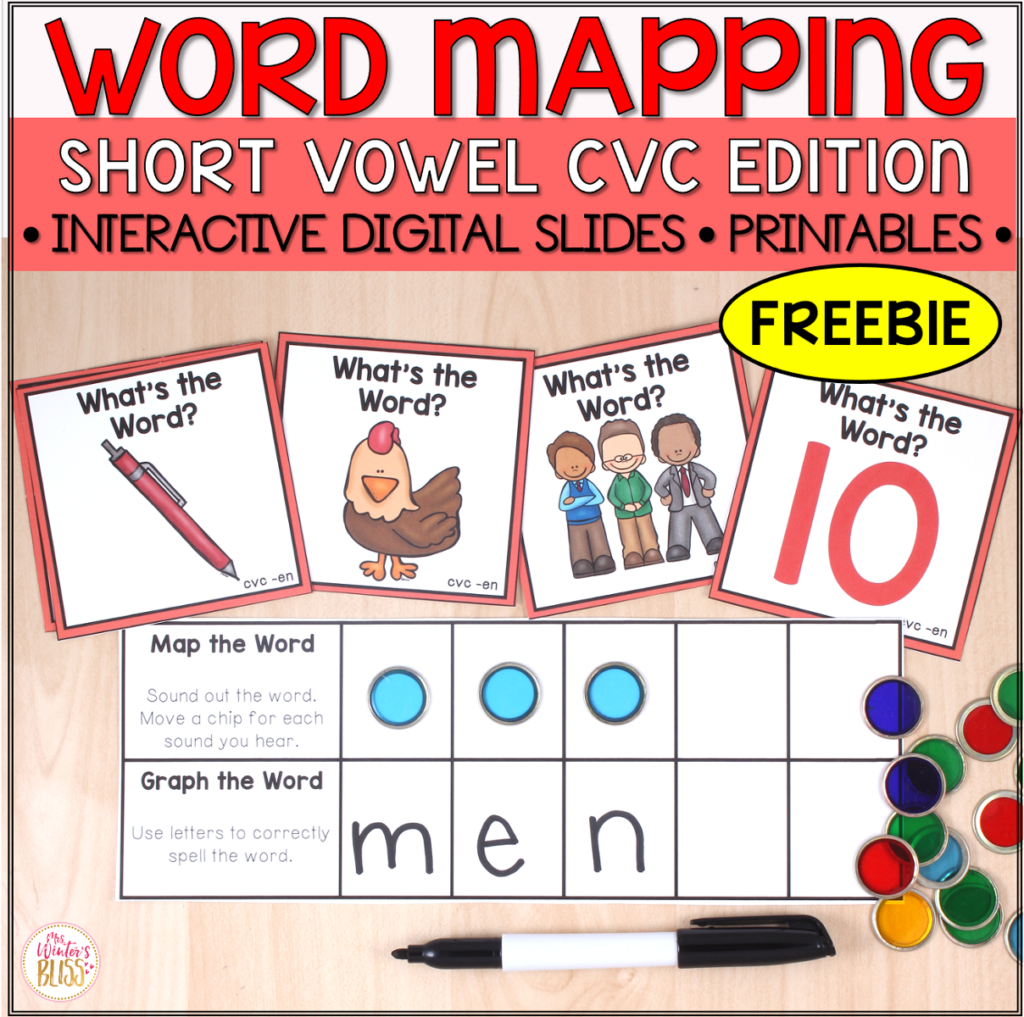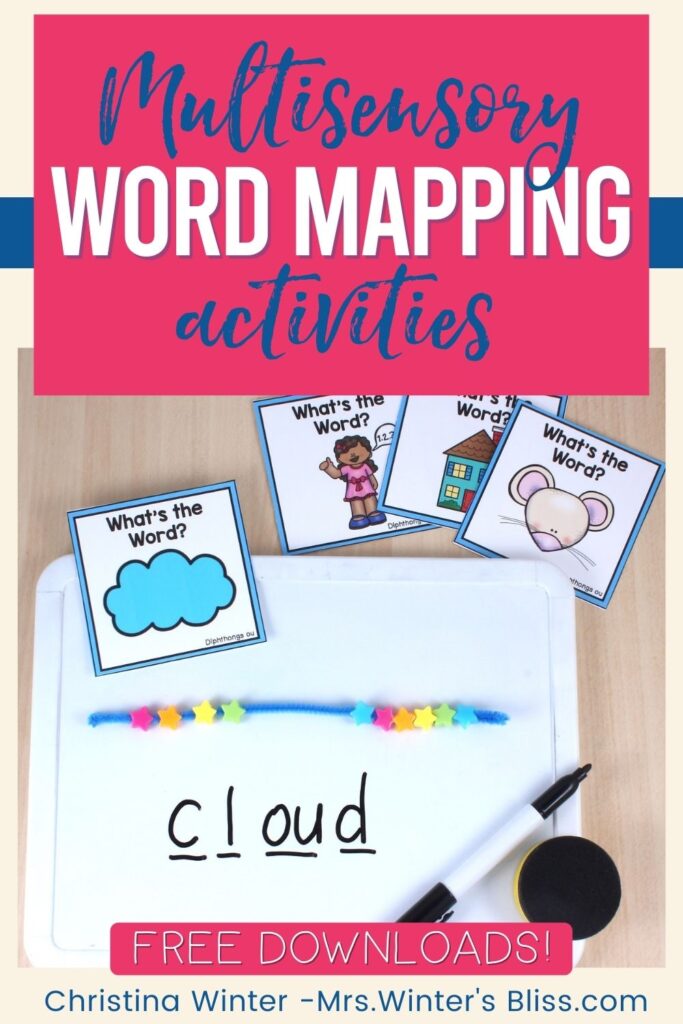
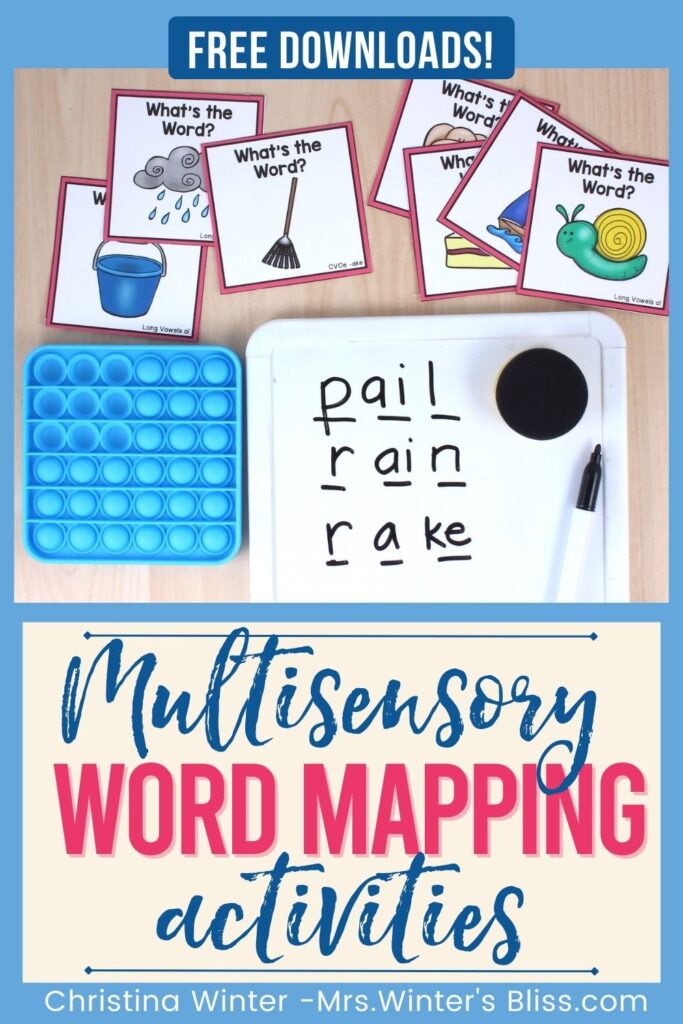
In this post, I explain how multisensory instruction help promote orthographic mapping and help students learn to read. I share multisensory word mapping ideas and resources as well as a FREE CVC Word Mapping activity for kindergarten, first and second grade students.
As primary teachers we are responsible for providing every student with the instruction they need to become skilled readers. Studies show that the gap between proficient and less proficient readers widens over the elementary years and reading problems become increasingly difficult after third grade (Fuchs & Otaibu, 2006). This fact makes our job incredibly important.
So how do we do this? How do we ensure all students receive effective reading instruction and what does it look like in the classroom?
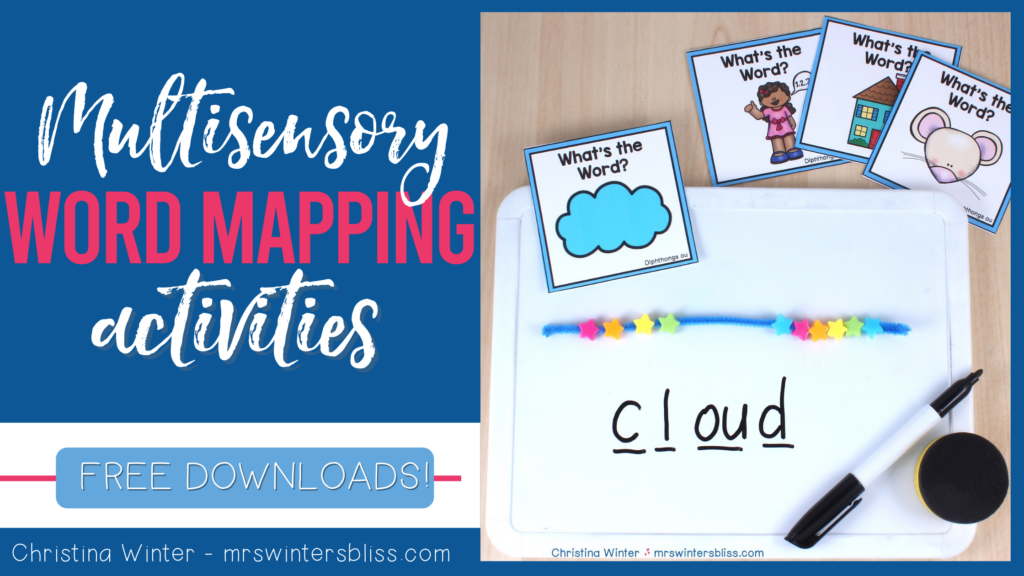
The Science of Reading has found that for reading instruction to be effective, students need intensive, explicit and systematic instruction. They need to practice activities that are engaging and cumulative. Additionally, research has found that multisensory phonics activities significantly increase the decoding skills of readers.
I know that can feel like a lot to consider when planning your instruction, so let me help you break it down! I’ve written before about explicit and systematic instruction and shared great cumulative practice phonics activities. Today I’m going to explain why multisensory activities are so important and helpful to students. I’ll share multisensory word mapping activities, resources and a FREEBIE to get you started!
How Does Multisensory Instruction Help Students?
Multisensory instruction combines listening, speaking, reading, and tactile or kinesthetic activities. Links are made between what students see, hear, and feel/touch. When students work with a pencil and paper they only tap into their visual pathway. Multisensory activities allow students to tap into multiple pathways which activates more circuitry, and in turn, enhances learning and memory.
Phonics activities lend themselves well to multisensory teaching techniques. Manipulatives, gestures, speaking, and auditory cues can all be used to focus a student’s attention on the sequence of letters in printed words.
Manipulatives you use in multisensory activities provide a scaffolding that beginning and struggling readers may need to be successful, but they are not intended to be used forever. As students become more proficient you should reduce the multisensory scaffolds until the student is using only the visual for reading. When students have errors you can bring back multisensory techniques to help them work through the challenges and then go back to having them practice without the scaffold.
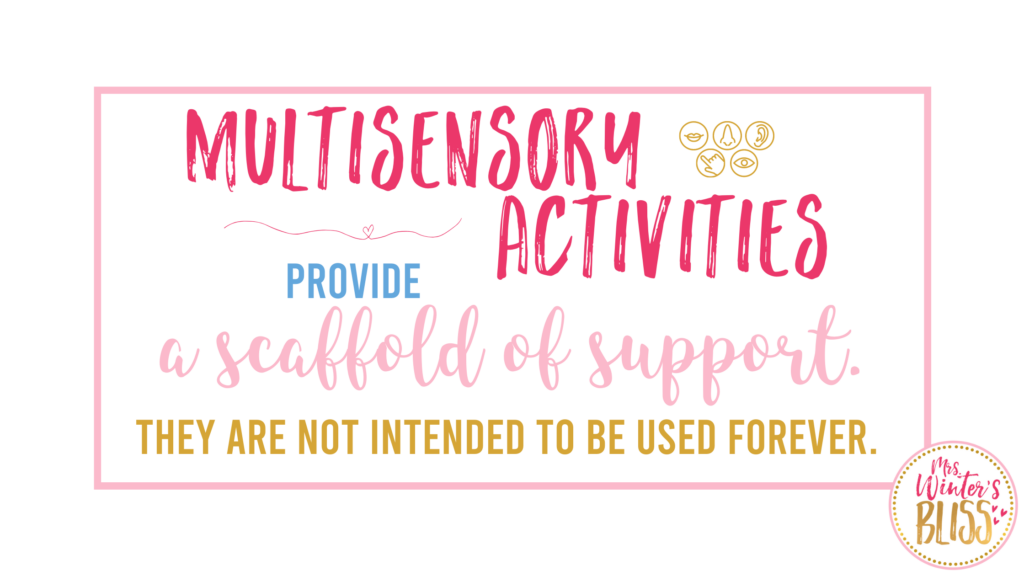
Finally, multisensory techniques are motivating and engaging to most children. They fully engage the brain and make learning more memorable. With all the phonics instruction and practice you do each day, it is important to find ways to keep kids excited about learning. Multisensory activities are a great way to do just that!
Multisensory Word Mapping Activities
Word mapping activities are a great multisensory way to promote the process of orthographic mapping and give students practice with the phonics skills you teach. They offer a physical way to represent the relationship between the phonemes and graphemes. Students physically connect or match the letters with the sounds they represent and help promote the process of orthographic mapping. Ultimately word mapping activities build word recognition and decoding skills that improve fluency in both reading and writing.
Here are some highly-engaging ways students can practice Word Mapping:
Silicone Bubble Poppers: These things are all the trend these days so your students will no doubt LOVE using them to help map out their words. Students simply push down a popper for each phoneme they hear in the given word. They then write out the grapheme for each of the phonemes they “popped”.
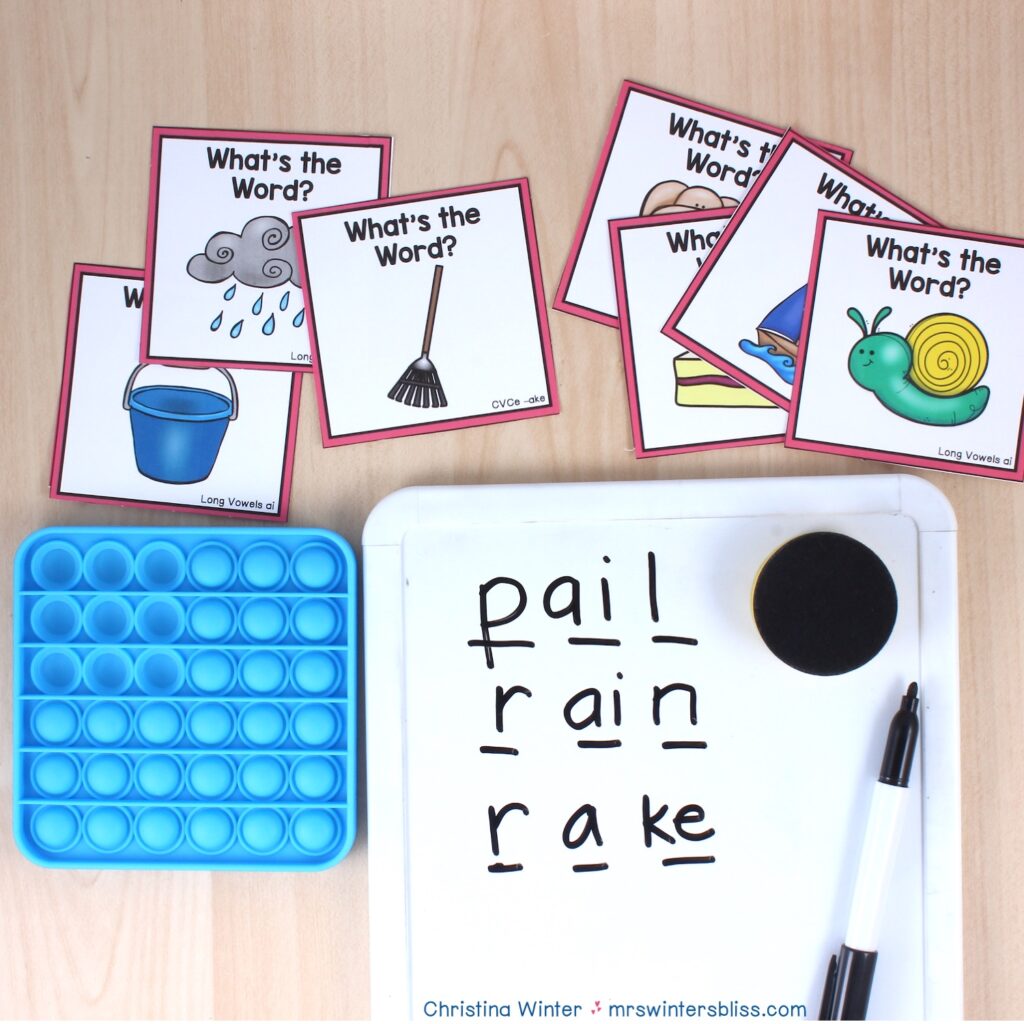
Mini-Erasers: Using seasonal mini-erasers are an easy way to make word mapping a little more festive! Students can touch each eraser to represent each sound. Then they write out the graphemes that represent each eraser.
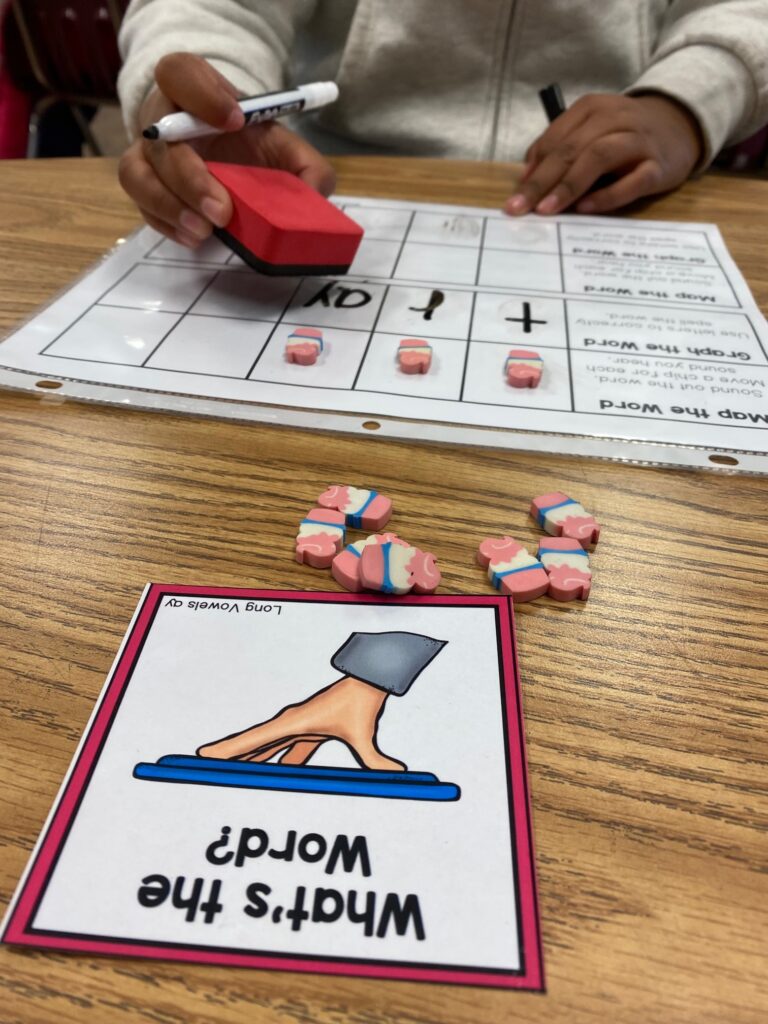
Playdoh Balls: First, give students their own laminated sound box sheet and some play-doh. Next, have them create little balls of play-doh for each phoneme they hear in the given word. Then they squish the ball with their finger as they repeat each sound aloud. Finally, they can write the graphemes to match each sound.
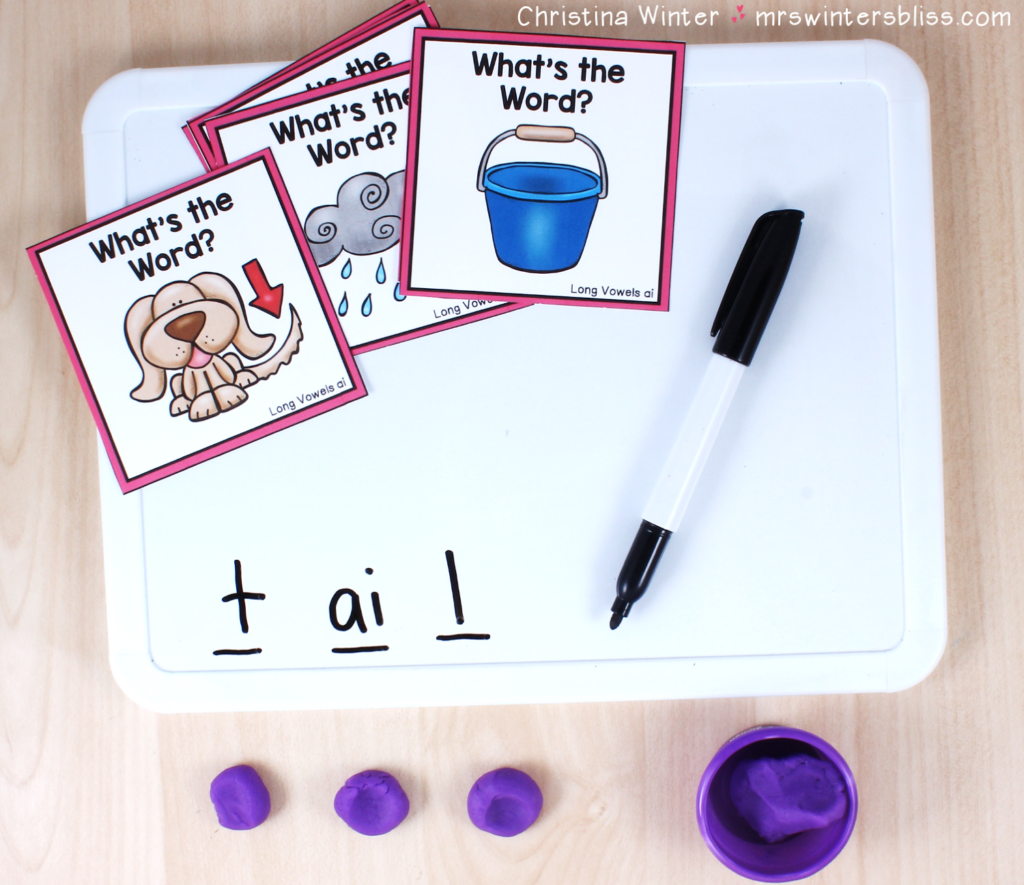
Sound Beads: Sound beads are a simple low-prep way for students to practice students phonemic awareness. They simply move a pony bead along the pipe cleaner for each sound they hear in the word. Students can connect the beads to blend the sounds together and say the word, and drag them apart to segment it.
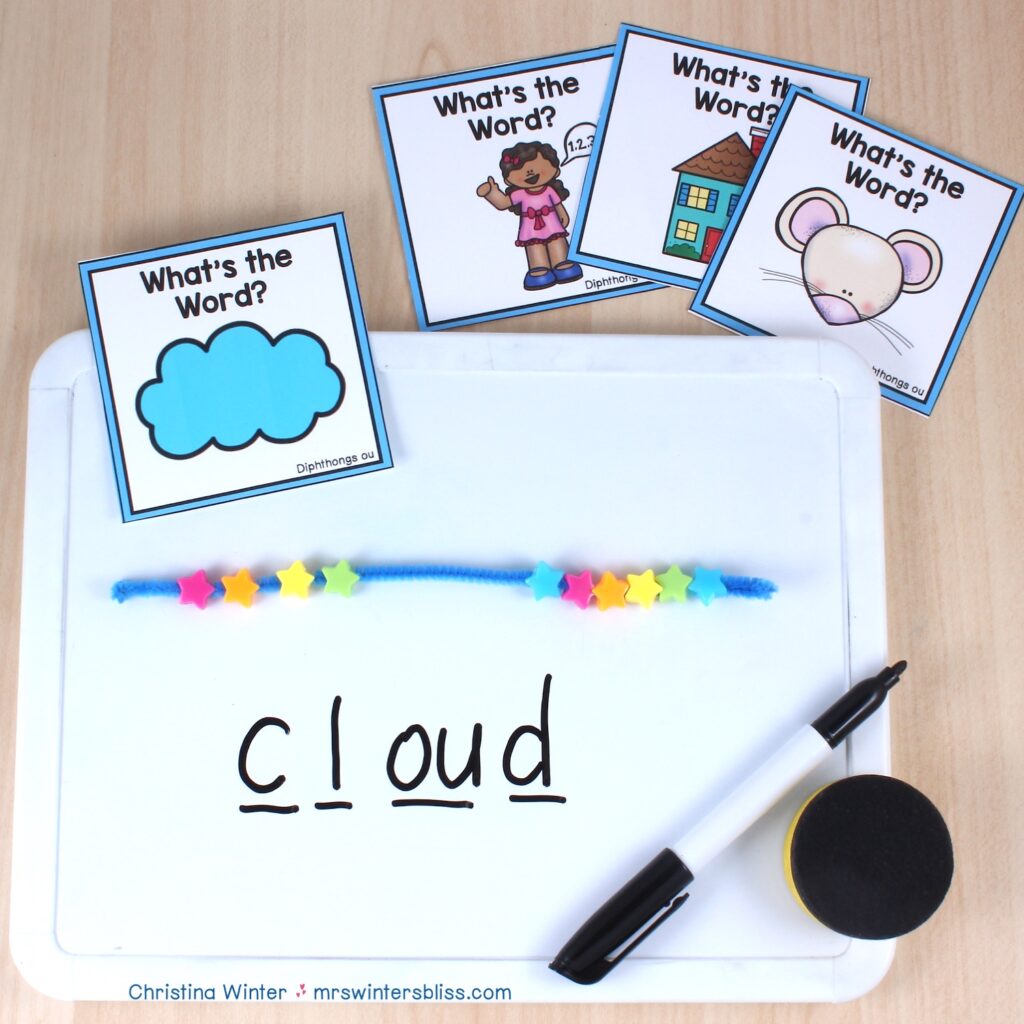
If you are eager for more, take a peek at this post where I share more multisensory phonemic awareness routines and activities.
My Word Mapping Resources
We know that word mapping activities are a great multisensory way to help students build their word recognition and decoding skills. The only downside is that they can take a lot of time to create!
With everything else on your plate I realize you may not have time to prep mapping activities for EVERY phonics pattern you want your students to learn. So to help save your valuable prep time, I have gone ahead and created my own word mapping resources!
Printable and Digital Word Mapping Resource
This science of reading-aligned word mapping resource will help your kindergarten, first and second grade students strengthen their phoneme-grapheme associations, promote orthographic mapping and permanently store words in their sight word memory.
This resource comes with mapping boards and word image cards so your students can enjoy the multi-sensory scaffolds in small group instruction and/or independent practice.
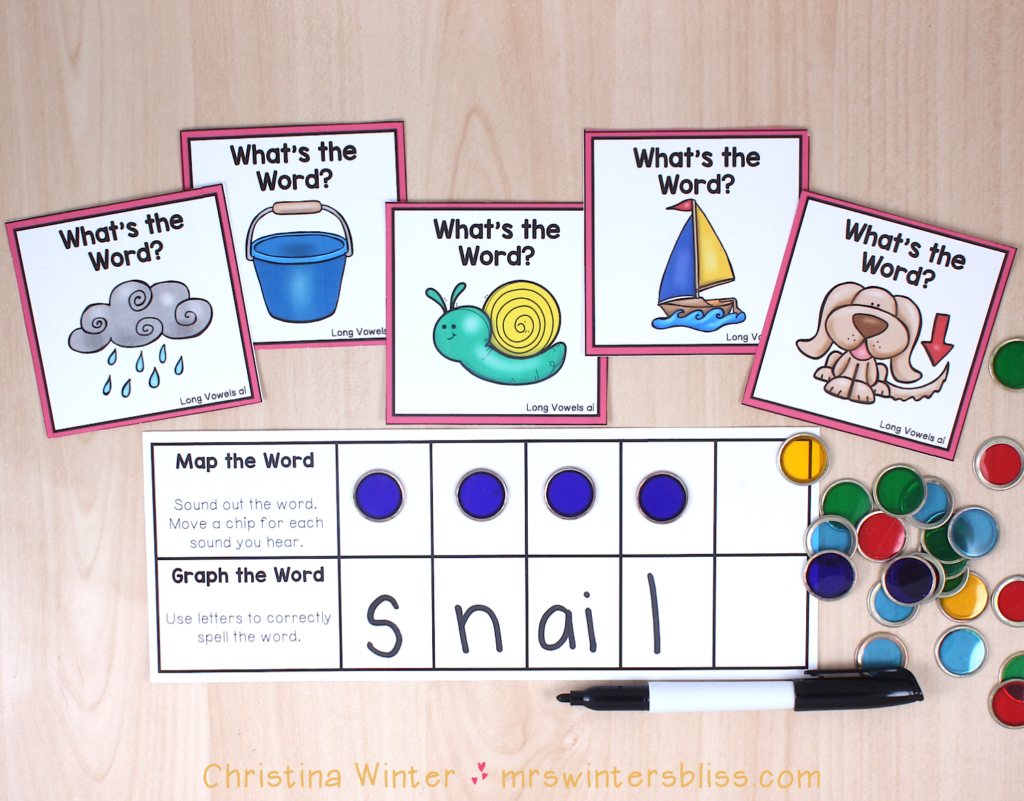
You also get digital slides where students first see a picture of the word to build meaning and then hear an audio recording of the word. Then they map the phonemes they hear, and finally spell the word using graphemes.
The phoneme tapping and mapping worksheets provide practice with short vowels, blends, digraphs, long vowels, CVCe, R-controlled, and diphthong words. You’ll get 42 printables with self-checking answer keys that are perfect for independent student practice, literary centers, homework, or left as a meaningful activity for a substitute.
Heart Words Word Mapping Activities
Did you know that irregular high-frequency words can be committed to memory after 1-4 exposures, but for struggling readers, it can take up to 20 exposures? That means our students need A LOT of practice with their high-frequency words!
These Science of Reading-aligned Heart Words Multisensory Word Mapping Activities give your students the repeated exposure they need to commit words to memory.
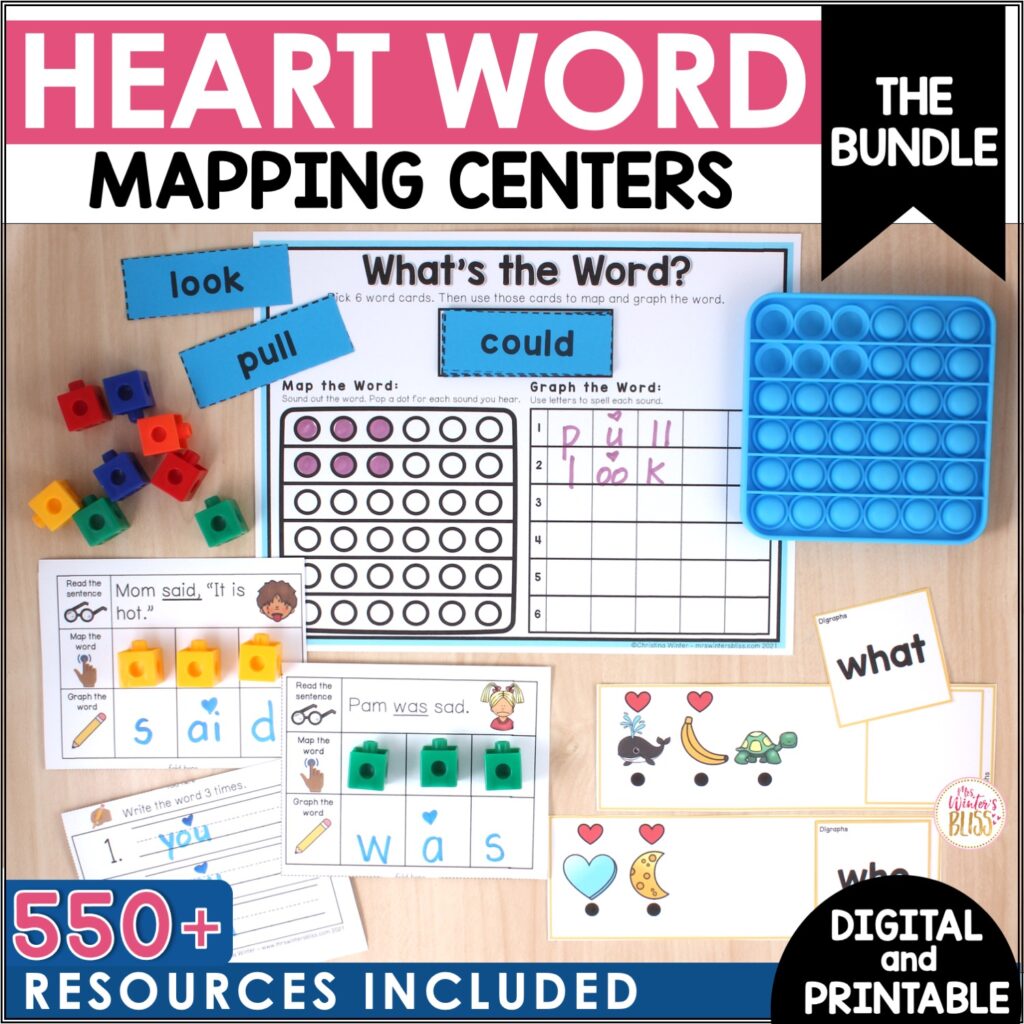
The activities in this resource were designed to be used after you have explicitly and systematically introduced heart words to your students. Each activity is self-checking and provides immediate feedback to ensure students practice spelling their heart words the correct way!
With this bundle, you’ll get FOUR NO PREP, multisensory heart word center activities.
1. Heart Words Digital Word Mapping
In this digital center, students first hear an audio clip of the word. Then they read a sentence and map the word by moving a chip for each sound they hear. Next, they graph the word by spelling the word with graphemes (letters). Finally, they identify the “tricky” part of the word that they must learn by heart.
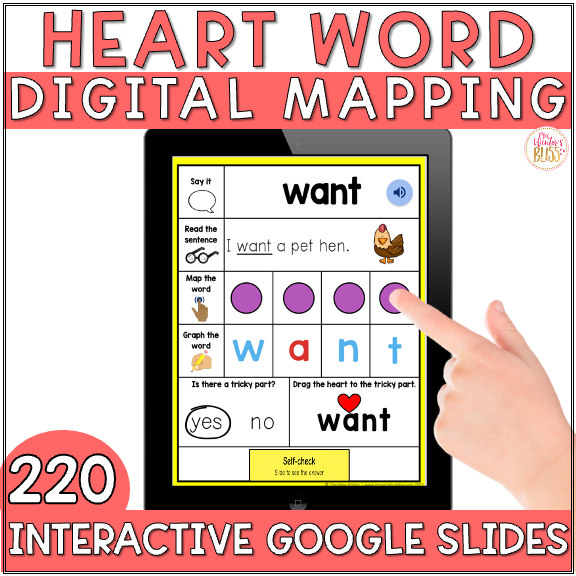
2. Heart Words Word Mapping Task Cards
Students first read a sentence to hear the high-frequency word used in context. Next, they map the word by placing counters/cubes in the sound boxes. They then graph the word by spelling the word with graphemes and finally, write the word three times
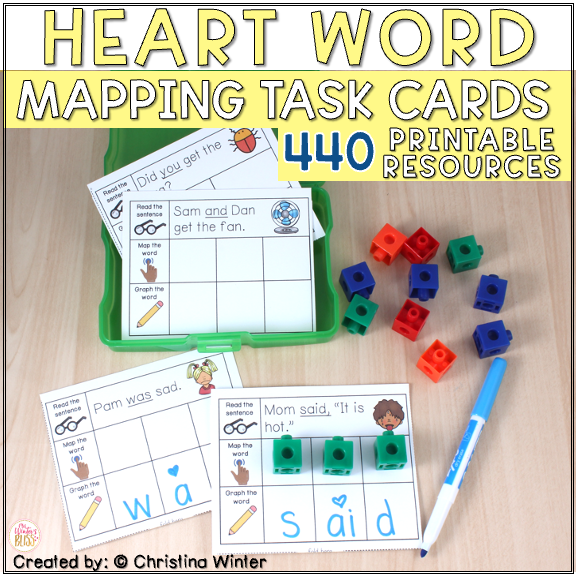
3. Mystery Heart Words
Here students identify the sound represented by each picture and blend the sounds together to identify the mystery heart word. You’ll get 56 game mats that include 220 words- enough to last year all year long!
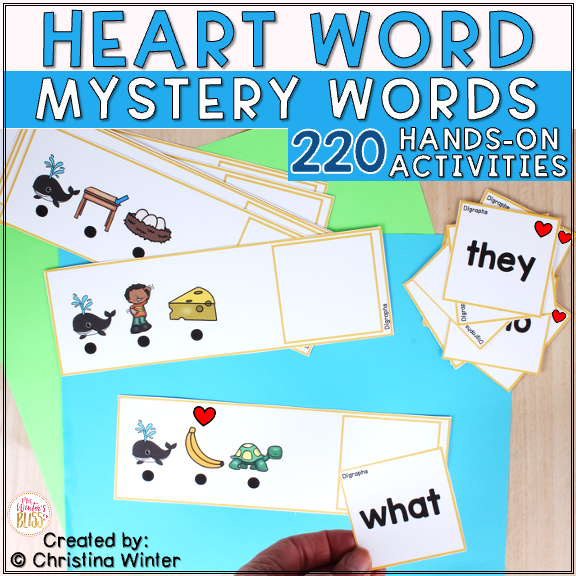
4. Heart Words Word Mapping
In this activity, students map the word by popping a dot for each phoneme they hear. Then they graph the word by spelling out the word. You can use the pop-it printables that are included or purchase your own. Either way, this activity is highly engaging for students!!

Ready to give multisensory Word Mapping activities a try in your classroom? To get you started I’m sharing FREE CVC Word Mapping activities! This sample makes a perfect literacy center or independent activity! Grab it here:
I hope the information, ideas, and resources I’ve shared today will motivate you to bring multisensory word mapping activities into your classroom!
-shop this post-
-
Sale Product on sale
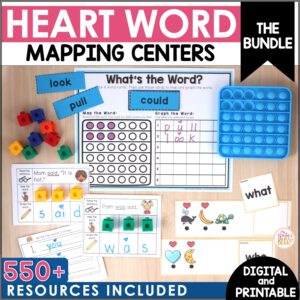 Heart Words Word Mapping Centers & Activities BUNDLE – EditableEarn 0 Reward Points
Heart Words Word Mapping Centers & Activities BUNDLE – EditableEarn 0 Reward Points$17.50Original price was: $17.50.$14.00Current price is: $14.00.Rated 5.00 out of 5 based on 4 customer ratings -
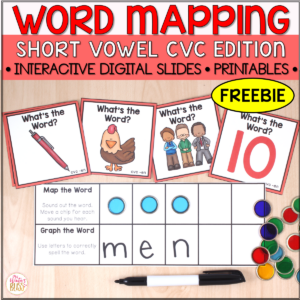 FREE CVC Word Mapping – Connecting Phonemes to Graphemes$0.00Rated 4.98 out of 5 based on 57 customer ratings
FREE CVC Word Mapping – Connecting Phonemes to Graphemes$0.00Rated 4.98 out of 5 based on 57 customer ratings -
Sale Product on sale
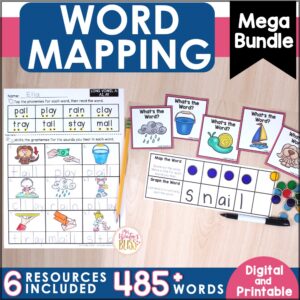 Word Mapping – Connecting Phonemes to Graphemes MEGA BUNDLEEarn 0 Reward Points
Word Mapping – Connecting Phonemes to Graphemes MEGA BUNDLEEarn 0 Reward Points$24.50Original price was: $24.50.$19.60Current price is: $19.60.Rated 5.00 out of 5 based on 12 customer ratings
–PIN for LATER–


